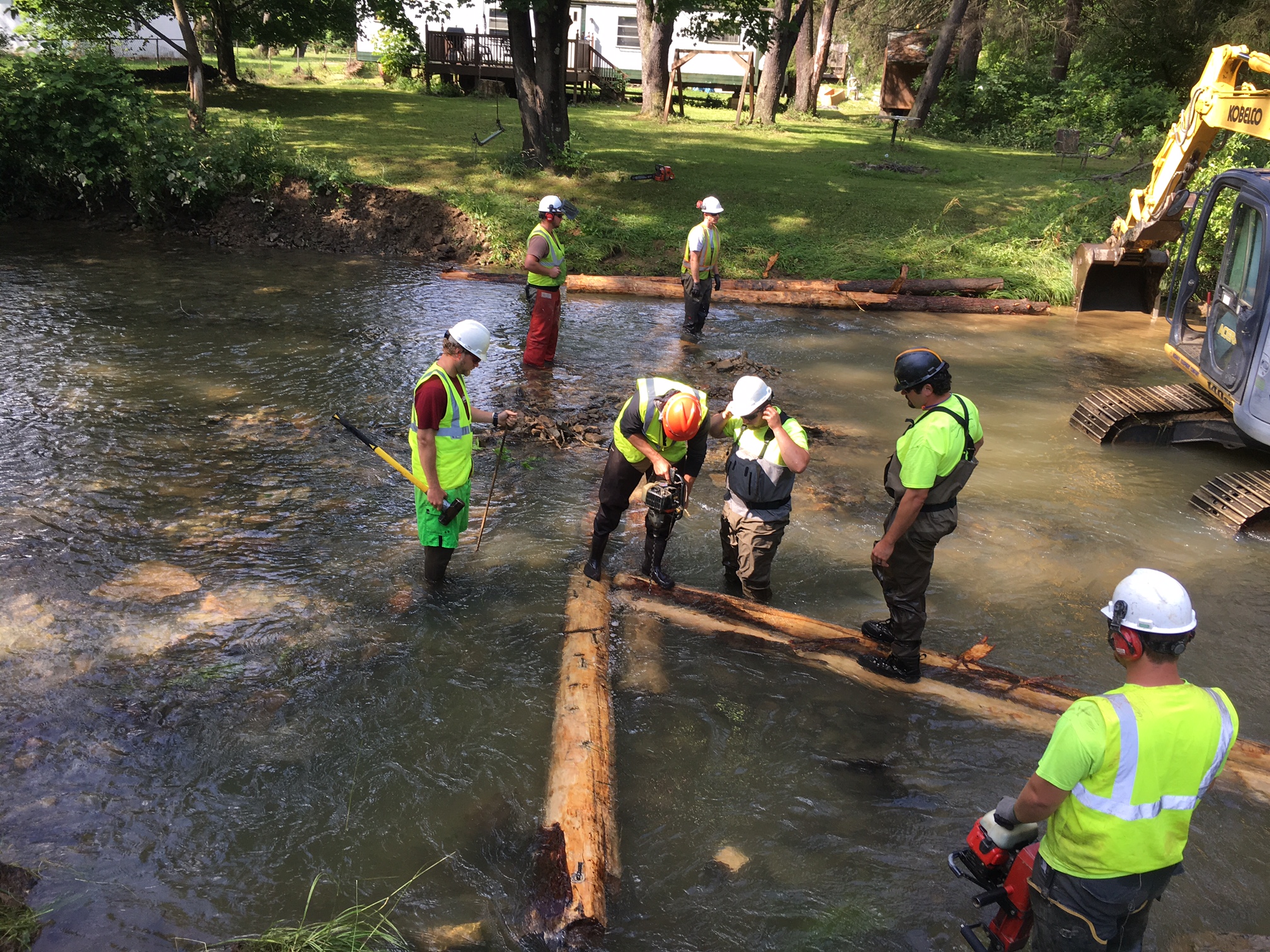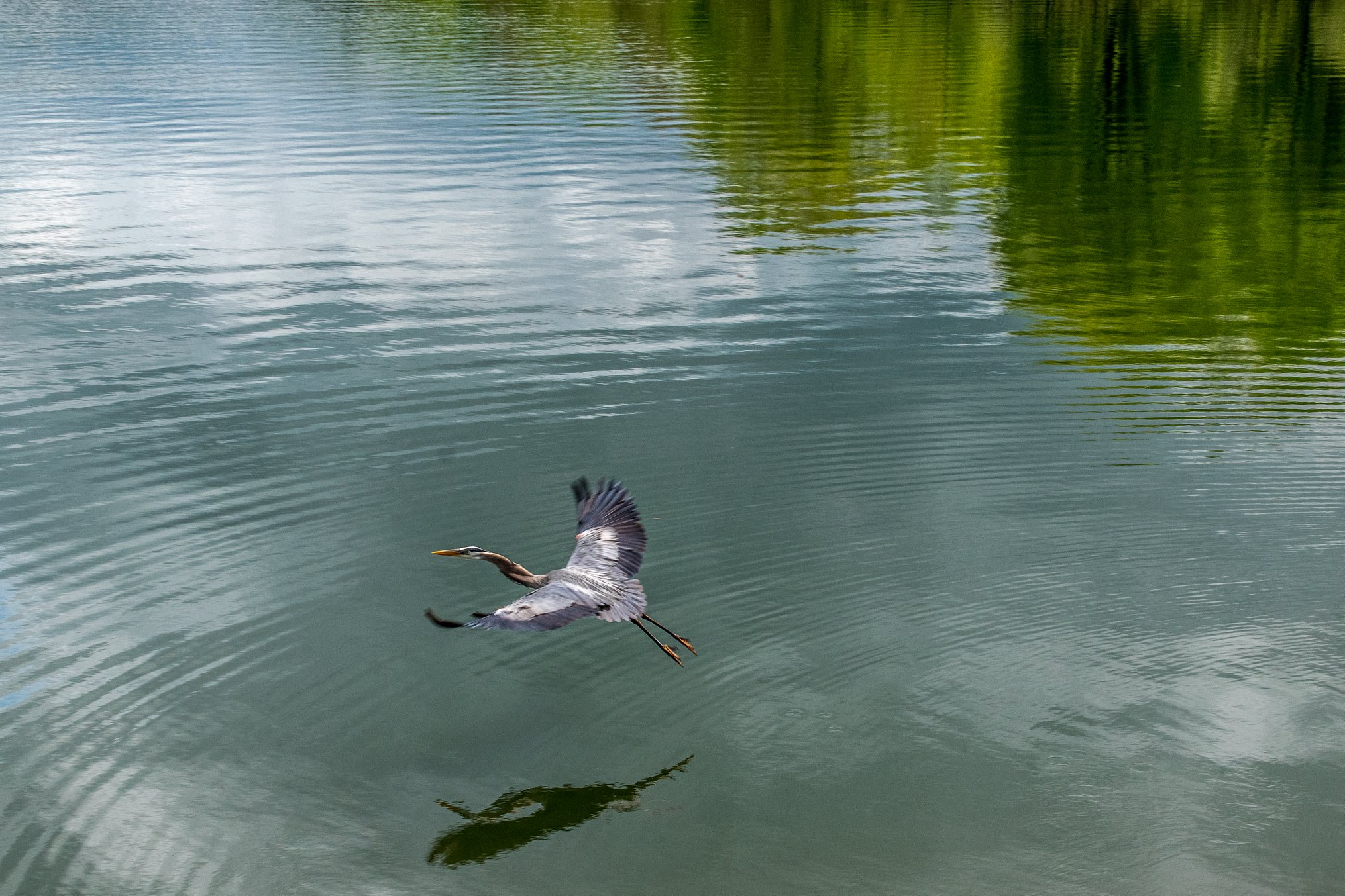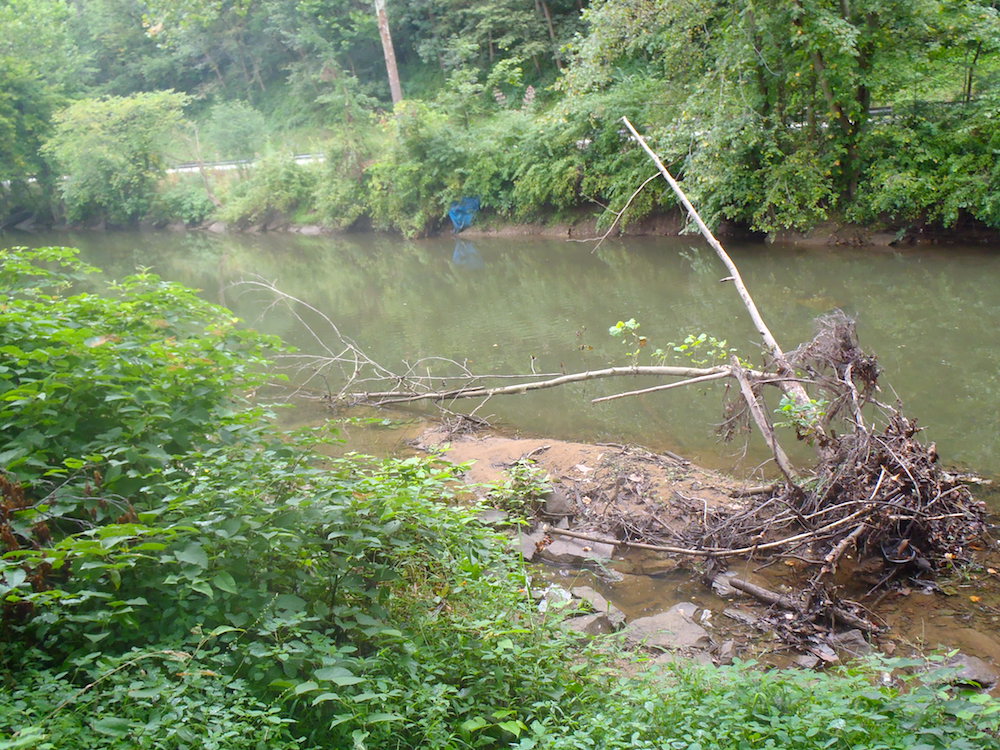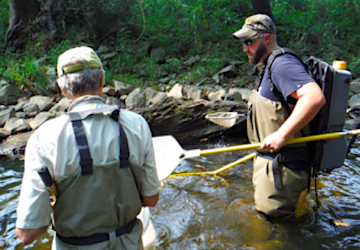- (724) - 238 - 7560
- susan@loyalwater.com
- Mon. - Thur. 7:30AM - 5:30PM
Loyalhanna Nature Trail
Loyalhanna Nature Trail Markers
Welcome to the Trail
As you walk, just scroll down the 12 numbered stations to learn more stories about this amazing world between two creeks. To see and appreciate nature, just slow down for a moment, listen, look and be surprised. Enjoy your discoveries.

1. Swinging Bridge
The swinging bridge was built in the early 1900s and was originally used primarily by the residents on the other side of the Loyalhanna (Nicely Road) and then later it became a unique attraction along Route 30. Although it stood the test of time and high water events for over a century, it was destroyed by a flood beyond repair in 2019.

2. Nature's Cures
In the summer, watch for stinging nettle at this spot. This plant causes an uncomfortable tingling or itching when it comes in contact with skin. Luckily, you’ll also find jewelweed here. The juice of jewelweed is a natural cure for the sting if rubbed on the skin.
Look up at the tall trees lining the stream here. They are a “cure” for streambank erosion, as their big root systems help hold the soil on the banks. You can also see a manmade solution—a log deflector that keeps the water in the main channel and prevents streambank erosion. Partnering organizations including the Loyalhanna Watershed Association, PA Fish & Boat Commission, Western PA Conservancy, Westmoreland Conservation District and Forbes Trail Trout Unlimited have worked for decades on similar projects throughout the watershed.

3. Vineland
This is a great place to see vines. No, not the videos on social media! Real vines, climbing on trees. Can you identify any of these vines here? Not all vines are created equal. For example, grapevines provide a soft mast food source for wildlife. These as well as poison ivy and Virginia creeper occur naturally in Pennsylvania, while Oriental bittersweet and Japanese honeysuckle are invasive. Oriental bittersweet, more so than the other vines, is likely to kill trees by girdling them.

4. Loyalhanna Leviathan
Water is a powerful force—it has carved the Grand Canyon and our own Loyalhanna Gorge a few miles downstream. On the streambank opposite where you’re standing, you can see layers of bedrock. A layer of sandstone cuts through horizontal layers of flagstone. The rocks here have weathered—cracked, broken, fallen into the stream—due to the combined forces of water and ice.
In the stream you can see some big, flat rocks. These are the favorite hiding places of our region’s largest amphibian—the eastern hellbender salamander. This salamander needs clean, cold streams, large submerged rocks, and a good supply of crayfish to survive.

5. Nature's Colors
Like many spots along the Loyalhanna, this is a good place to see plants boasting color almost year-round. In the spring and summer, look for woodland wildflowers like trout lily and spring beauty.
In the fall, look for a beautiful array of color in the foliage. This is caused by the breakdown of chlorophyll and the rise of bright pigments triggered as the light wanes and temperatures drop. Can you identify the trees based on their leaves in this photo?

6. Sycamores and Herons
A common tree found on the banks of streams and rivers is the sycamore. Can you spot them here? Look up and you will see their bark is white with gray patches—they resemble skeletons when they don’t have leaves. Speaking of leaves, their leaves have a unique shape. In the fall, you’ll find some really big sycamore leaves on the ground.
Great blue herons often nest in sycamores, usually as a colony (many heron nests in the same tree or a couple of trees.) We don’t have a heron nest here on the trail, but they like to fish here. Look around—can you find any fish parts that have been speared by the heron’s big bill? Can you see any large splays (that’s a fancy word for bird poop!)—those could be from a heron! This beautiful photo is courtesy of Jan Fiorina.

7. Sun Worshippers

8. Snagging a Home

9. Confluence
This point is the confluence (or junction) of the Loyalhanna and Mill Creek. Can you find differences between the two streams? Which is bigger? Is the substrate (stuff on the bottom) the same in each? Is the water the same color?
The Loyalhanna drains 100 square miles up to this point, while the Mill Creek watershed drains 22 square miles, so the Loyalhanna carries slightly more water. The Loyalhanna has a rockier bottom, while the Mill Creek bottom is more silty, probably from soil runoff gathered as it passes through a lot of farmland and developed land. For this same reason, after a hard rain, Mill Creek is more likely to look like chocolate milk, as it carries a lot of sediment stirred up by the high flow of water.

10. Effects of Route 30
Now you’re walking along Mill Creek, and you can’t help but notice Route 30 right there on the other side. What effects do you think the highway might have on the water quality and wildlife habitat here?
Did you think of these items and issues? Noise disturbance from cars, runoff polluted with sediment, salt and oil, trash thrown from cars.

11. Silky Dogwood

12. Apples and Boxes
An apple a day . . . Ok, these probably aren’t a kind of apple you would want to eat—they are very sour!—but you are surrounded by native crabapple trees, which produce tiny apples that wildlife really like. You can spot the crabapple trees by looking for their long thorns.
You can also see several bluebird boxes in this area. These are placed here to give a good, safe nesting place to bluebirds and tree swallows (pictured) along with other cavity-nesting birds like wrens and chickadees. In the wild suitable holes for nesting is challenging. The boxes provide a tremendous resource for these birds.
Connect with us
6 Old Lincoln Highway West
Ligonier, PA 15658
-
1-724-238-7560
-
susan@loyalwater.com




